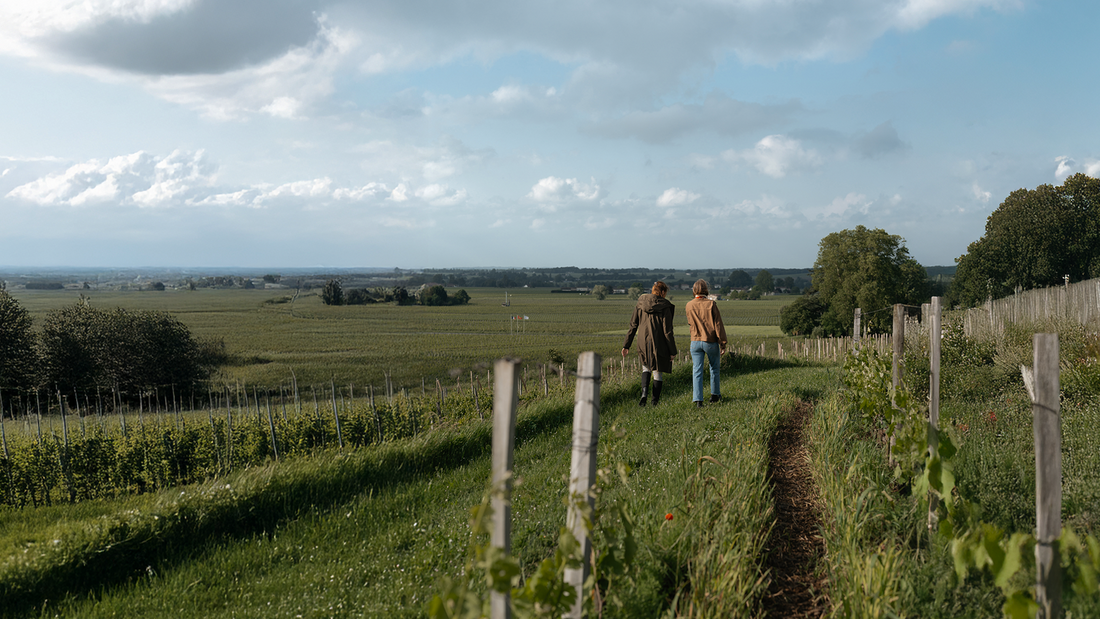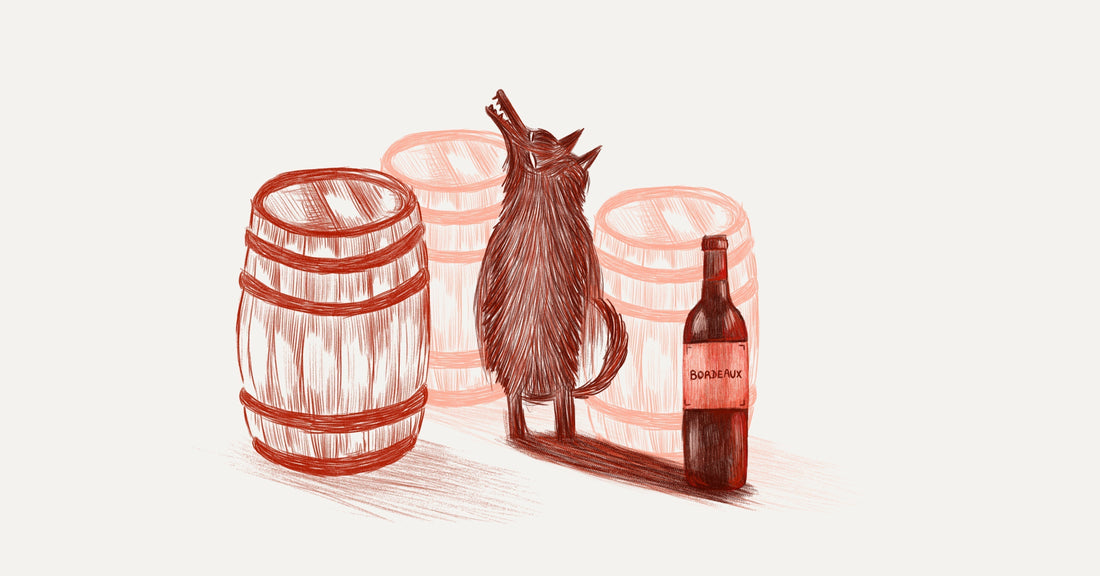

(It's not us, it's not us )
The Terror of Terroir.
Bordeaux, a barbaric land where blending reigns supreme. Terroir no longer exists—absorbed, flattened by the relentless actions of its terrifying winemakers, unafraid to mix soils and grape varieties in vats reminiscent of bubbling cauldrons.
Even if it sometimes appears hidden compared to other regions, here too, terroir and plots exist—and express themselves! If you investigate, if you dare to ask a few not-so-intrusive questions, each estate holds a very precise treasure map of its vineyard plots. Grapes are planted wisely, with knowledge and intent, based on soil type, the slope of the parcel, or even the location of a Native American burial ground.
A soil map—full of varied traps (asteriated limestone for Right Bank Merlots, not to be confused with Saint-Estèphe limestone from the Eocene era—several million years younger...)—tells us much about the diversity of Bordeaux. It also explains why a good winemaker will never make the same wine as their neighbor.
Blending is the rule in Bordeaux—but it’s meant to exalt the terroir, not hide it behind an oenological trick.
The Bordeaux sprayer massacre.
Deep in the Bordeaux vineyards, villagers make a grim discovery: their winemaker neighbors are desecrating nature with destructive spray treatments. What are these sinister substances they’re spreading?
Bordeaux still carries the image of pesticide-laden vines and relentless, unreasonable treatments. But in recent years, things have begun to change. Estates are turning organic, and institutions are supporting them. By the end of 2024, Bordeaux had become the leading organic wine region in France. Trade bodies are encouraging, supporting, and initiating environmental programs.
By the end of last year, over 75% of the Gironde vineyard area was certified under an environmental scheme—up from just 35% ten years earlier. Sure, maybe an overload of labels confuses consumers...
But in concrete terms, a quarter of Bordeaux's vineyard surface is farmed organically—above the national average of 21.5%. Is Bordeaux turning into a model student?
Bloody prices.
In Bordeaux, a ruthless killer prowls the Place. Bloody and merciless, it strikes large and small without hesitation. Its name? Price. It spills a lot of ink; every spring, the en primeur campaign turns the wine world into a bloodbath.
Bordeaux is home to over 5,400 wine producers. The en primeur campaign—Bordeaux’s annual marketing and sales extravaganza—involves around 200 of them, representing the majority of the region’s value.
To say Bordeaux is too expensive is to look at the map with blinders on. It’s like saying France is only Paris.
Bordeaux boasts over 117,000 hectares of vines—and nearly as many price points. Search "Bordeaux wine price" on Ecosia, and most results are e-commerce sites touting the “best prices” or articles listing “Top 15 Bordeaux wines under €15.”
Bordeaux offers some of the most expensive and the most affordable wines in France. Excellent value-for-money options are everywhere!
Sharp tannin.
Lurking in the night, it dries your mouth and whacks you over the head if you’re not careful. Lying in wait for the slightest opportunity to make itself known, it can turn a delightful sip into pure torture.
Powerful. Intense. Structured. Complex. Rustic in youth, they mellow over time to bring elegance and depth. Are we talking about a baritone? A cheese? Almost—it’s tannin.
An essential component of Bordeaux red wines, tannin demands work both in the vineyard and the cellar. Naturally present in grapes, it can sometimes overpower the wine’s other elements and mask its fruit aromas.
It’s a question of taste and style: some Bordeaux wines still crown tannin as king, but today, the style has shifted toward more balance—where fruit, freshness, and indulgence take the lead.
In the past, you had to wait 20 years to drink Bordeaux. Today, you can enjoy them over 30 years, discovering their evolution with joy over time.
A vintage later.
The Bordeaux bashing virus still lingers. At trade shows, sellers wander aimlessly in search of a purchase order. Merchants and sales reps travel the world to reconnect and reintroduce Bordeaux.
But today, winemakers are shaking things up! Small independent producers and large family estates are stepping forward to showcase their wines and shift perceptions of Bordeaux. Here, the wines are good—they’re meant to be drunk and shared. Here, both wines and winemakers have stories and passions to tell. Here, tomorrow is written today—and we’re proud to share these passionate bottles with you on Goodness .


